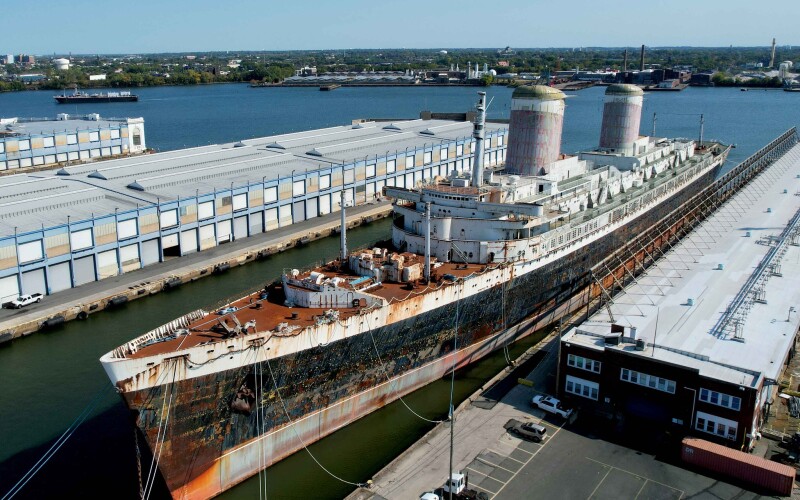Preparations are underway to tow the historic ocean liner SS United States from its longtime berth in Philadelphia before a long tow to the Florida Gulf coast and ultimate sinking for an artificial reef.
But those plans hit another snag Thursday, when the nonprofit SS United States Conservancy said the first move was postponed when the Coast Guard requested “follow-up details to ensure a proper tow from Pier 82 to Pier 80” on the Delaware River.
Officials in Okaloosa County, Fla., obtained final approval from the Coast Guard to begin moving the United States from Pier 82 in South Philadelphia to a docking area in Mobile, Ala., where preparations will continue for emplacing the ship off the Destin-Fort Walton coast on the Florida Panhandle as a future recreational diving and fishing attraction.
The operation outbound on the Delaware River was to start Saturday Feb. 8, but that’s been postponed with no new date, according to a late Thursday afternoon update from county and conservancy officials.
In October 2024 the conservancy and Okaloosa County announced they had a $10.1 million agreement for the county to acquire the once-luxury 1950s liner. The non-profit worked for more than a decade in hopes of relocating and renovating the ship as a museum and East Coast urban waterfront attraction. But demands for increased rent from owners of its Philadelphia pier and an ensuing federal court order to move the ship left no choice, the group said in a Oct. 11 statement.
The conservancy’s plan now with Okaloosa County includes an onshore museum to house its collection of art and artifacts from the ship, its iconic winged funnels. one of its 5-bladed propellers and important engine room components.
Then the epitome of American maritime prowess, the 992’x101’ liner was the world’s fastest passenger ship when it entered service in 1952, clocking a trans-Atlantic crossing at a sustained 35 knots, powered by Babcock & Wilcox boilers and Westinghouse geared steam turbines. The liner was subsidized by the U.S. government, and capable of rapid conversion to a troopship.
World War II and the battle of the Atlantic was still a vital memory for U.S. defense planners, who thought the SS United States could sealift reinforcements – up to 14,000 troops – to any future confrontation in Europe while outrunning the danger of Soviet submarines. Capable of crossing the Atlantic in three and a half days, the ship was a popular ride with celebrities of the day.
The United States, like other trans-Atlantic liners, faced competition from the growing airline industry, and it went out of service in 1969.




